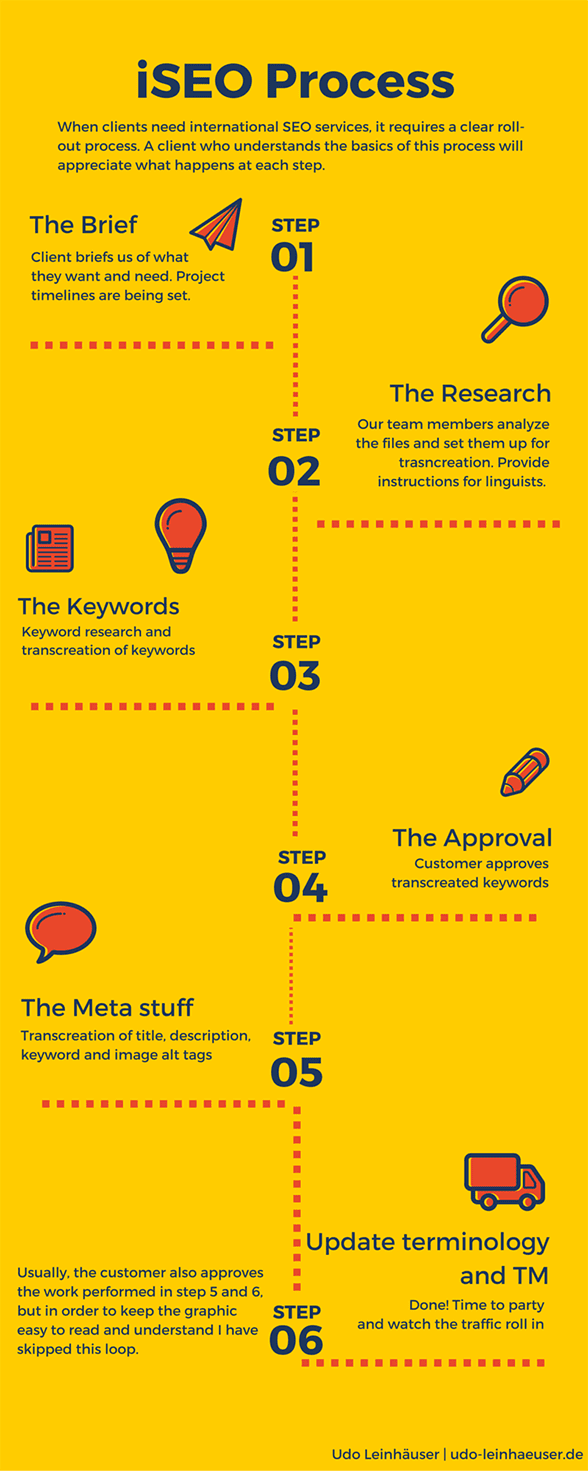
Six steps to successful international SEO
The job of moving your own website in one language to a higher position in search results is hard enough. But providers of language services are required to move the multi-language websites of their customers higher in the rankings as well. We will show you how to pull off this trick.
Successful international SEO involves clearly defined process steps and close cooperation between the customer and the service provider. Unlike single-language SEO, language knowledge and knowledge about cultural features in the respective target markets are crucial aspects of international SEO.

Localization and keyword search
On the basis of the briefing and the documents for the keyword search, the localization partner in each country will carry out the localization and keyword search. The identified keywords will be sent back by the localization partners as an Excel file, listing various options and respective search volume (Google AdWords —> Keyword Planner).
Approval of the keywords by the customer
Ideally, the customer will approve the particular keywords. The identified keywords should be documented so well that the customer can gain an impression of them even without knowing the foreign language – using reverse translation if necessary.
Localization/transcreation of the title, the meta description and the ALT tags of photographs
The composition/localization of the title, the meta description and the ALT tags of photographs require some additional knowledge about SEO. The localization partners should be trained in this regard.
Approval of the title, the meta description and the ALT tags of photographs
The customer should be included in the process here as well. This information will determine the appearance of the search results and thus the first impression of the company – even before the website is clicked!

Customer briefing, analysis of available files, preparation
In the first step, available data must be analyzed and processed if necessary to facilitate the subsequent localization. The customer should provide an in-depth briefing about the goals and focal points of a campaign as well as comprehensive terminology.
Briefing for the translators/linguists/SEOs
Ideally, the customer will have a SEO partner agency in each target market that can conduct successful keyword analysis. If such a partner is unavailable, translators can perform this job after being trained. The translators should be given sufficient training material and instructions about how to conduct successful keyword searches. The training material should also include such information as the title, meta description and the ALT tags of photographs.

Review of the localization web texts
In terms of a certified localization process, the texts should be checked by a separate proof-reader. Ideally, WDF*IDF analysis will be conducted in conclusion. In the process, the localized texts will be analyzed by a special tool. The software will review the text in terms of the keyword and the direct competition for this keyword. This analysis will produce a list of keywords that should appear frequently or less frequently in the text or that should be added. The WDF*IDF analysis will thus replace the concept of keyword density.
Subsequent quality check and approval by the customer
The texts are now ready for delivery! A subsequent quality check is designed to ensure that no typographical errors have occurred during the work to add the results of the WDF*IDF analysis.
Updating of the translation memory and terminology
This next task is to update translation memories and terminology with the help of new findings to ensure that they are available for the next project.

Comments